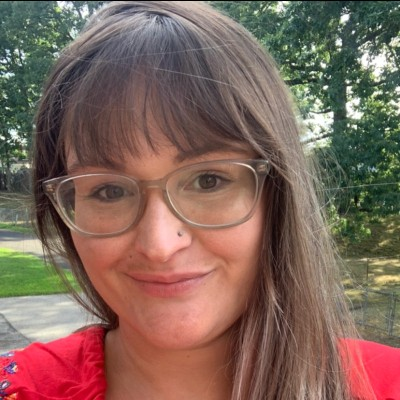

As a convener of strategic partnerships, we believe it is important to highlight the work of regional apprenticeship navigators, trained within the Registered Apprenticeship Navigator Apprenticeship program (ANRA) sponsored by the Keystone Development Partnership. Regional Apprenticeship Navigators gain knowledge and expertise in developing, registering, and managing registered apprenticeship and pre-apprenticeship programs, which is beneficial to the expansion of apprenticeship in our local areas. Meet Jessica Randall, Apprenticeship Program Manager at Drexel University and Adina Tayar, Registered Apprenticeship Navigator at EDSI. Jessica participated in the fifth cohort and Adina participated in the first cohort. We asked them a few questions to summarize their experience in the program.
Briefly tell us about your role and how it is connected to apprenticeship.
Jessica: “I am fortunate to have a devoted role in the university’s apprenticeship work. This has meant not only overseeing the programs we’ve registered, but I also act in my Navigator role by supporting our College of Media Arts and Design and School of Education is considering additional apprenticeships we might be able to offer. In addition, this has been an opportunity to add programing to the university as we are the educational provider for our CCMA program, something that didn’t exist prior to us launching the program.“
Adina: “My role was created about 3.5 years ago by the Bucks and Montgomery County workforce boards when they decided they wanted to have their own dedicated Apprenticeship Navigator to support their counties. As the 3rd and 4th largest per capita counties in PA, Montgomery and Bucks Counties are extremely dedicated to Registered Apprenticeship and Pre-Apprenticeship as a workforce solution for their employers, training providers and residents. My role has grown into serving as a county-wide and sometimes regional intermediary providing information about apprenticeships to stakeholders throughout both counties. I attend meetings, make connections, present to groups, help develop and register new programs, coordinate funding and recruiting efforts for existing programs, and serve as a liaison between the state & federal apprenticeship initiatives, legislation & funding, and the counties.”
What was the best part of the apprenticeship navigator program?
J: “Having come from working in NYC where the workforce system is so vast and varied, it can feel impossible to connect with your colleagues around policy, program, and best practices. KDP facilitates a well-defined space where practitioners of apprenticeship can connect personally and professionally. I’ve never been involved with something like it, I can really value it as a day-to-day staple in my work.“
A: “Attending the Apprenticeship Navigator Registered Apprenticeship program was a life-changing and valuable professional experience. Serving in a role as an apprentice for the year-long program gave me insight into the value as well as the nuances of apprenticeship first-hand. Getting to know the other apprentices in my cohort was the best part of the experience, as to this day we have a bond when we are in meetings together and are lucky enough to work on projects together. Learning apprenticeship together from the ground up gave us all a feeling of being on the cusp of something big and important that was about to become a very big part of our professional lives, despite our different backgrounds and job titles. Of course, now many of us all have ‘apprenticeship’ in our job titles in one way or another because we loved apprenticeship too much to not make it our main profession.”
How has the program benefitted your day-to-day operations in your role?
J: “Around 6-months into my tenure at Drexel, Navigators began. It was reassuring and refreshing to know the aspects I was struggling with in running the program effectively, were common to those in the same position. Knowing the pain points, [Apprenticeship] Navigators make the effort to equip you with tools to become more effective on the job. You also have a community with whom you can work through challenges.”
A: “The community of practice that is a part of the Navigator program, bringing together all of the program graduates, current cohort members, state apprenticeship office staff as well as other apprenticeship adjacent professionals, is integral to my day-to-day work and success. Formally called the Keystone Apprenticeship Alliance, this network of Apprenticeship Navigators serves as its own sounding board, providing each other with mentorship, insight, support, ideas, and introductions to help us succeed in the expansion and success of Registered Apprenticeship. Apprenticeship, in many ways, is ever-changing and quite new to many industries, which means there is ongoing learning about new ideas, new models, new ways to use funding, and new applications of apprenticeship and pre-apprenticeship to learn about from each other.”
What is one thing you would tell others (co-workers, family, the community) about apprenticeship?
J: “We have non-traditional apprenticeships, which can confuse people. Often times, I hear practitioners say, ‘people only know apprenticeships from the trades,’ as though it’s a negative, whereas I think it’s a positive. It means people have a reference point to anchor their understanding. It lets you root the conversation in what’s familiar to them, and from there, you can explain how non-traditional apprenticeships work.”
A: “I like to think of apprenticeship as an alternate way ‘through’ college, not as an alternate path to college. I think the most popular misconception about apprenticeship, that I dissuade every chance I get, is that it is just for union trades and just for people who aren’t college material. I always have to explain what Registered Apprenticeship actually is and then go into some detail about all of the industries where it’s being applied and all of the college credits, and in some cases degrees, it can lead to. It’s empowering and invigorating to help the people that come into my sphere of influence understand apprenticeship.”
If someone is interested in apprenticeships, what would you encourage them to do or think about prior to applying for a program?
J: “Our programs typically run as upskilling opportunities for folks. Our cybersecurity program is often an opportunity for those in IT help desk [positions] to upskill. Our CCMA program is often an opportunity for Patient Care Techs to upskill, so I’d encourage people to get their feet in the door of the industries they’re interested in, and to then consider these apprenticeships, offering paid, upward mobility.”
A: “Registered Apprenticeship takes a big commitment and can take a lot of time. The curriculum alone is at least 144 hours per year of dedicated time spent learning, with homework assignments, projects, and often tests. This is in addition to the full-time job that requires learning and mastering a large set of tasks. Apprenticeships should be entered into with commitment and mindfulness, but also with enthusiasm for the occupation, not just for additional learning or the wage increases. Applying to apprenticeship programs should be an exciting undertaking accompanied by commitment from both the apprentice and their supervisor and colleagues.”
To learn more about our navigators and the Registered Apprenticeship Navigator program, click here.